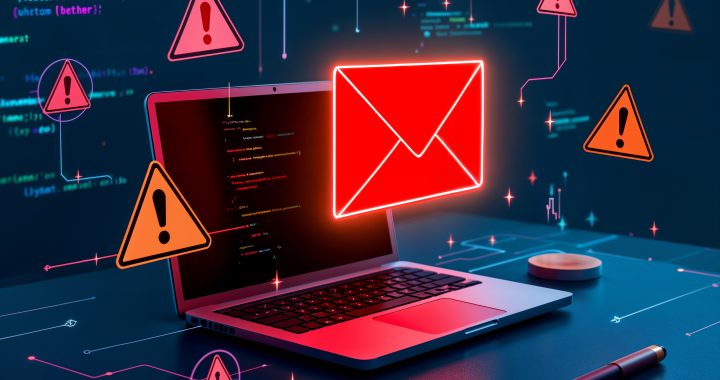In the digital marketing world, email continues to be one of the most effective channels for reaching audiences and driving conversions. However, as businesses grow, manually sending emails to hundreds or thousands of customers becomes impractical. That’s where email marketing automation comes in, offering a streamlined solution that not only saves time but also increases revenue.
In this blog, we’ll dive into how email automation works, the types of campaigns you can automate, and the benefits of incorporating this strategy into your marketing mix.
Why Email Marketing Automation?
Email marketing automation uses technology to automatically send emails based on specific triggers, actions, or times. It allows businesses to engage customers with relevant, timely content without needing manual input for each email. Automation is crucial in today’s competitive market, where consumers expect personalized communication and instant responses.
Key Benefits of Email Marketing Automation:
- Time Savings: Automation lets you set up emails once and then forget about them. Instead of manually crafting and sending each message, you can focus on other core business areas while your emails work in the background.
- Higher Engagement: Automated emails are highly relevant and targeted, resulting in higher open and click-through rates.
- Increased Revenue: Timely, personalized emails lead to more conversions, driving higher ROI than traditional email marketing.
- Scalability: Automation grows with your business. Whether you have 500 or 50,000 subscribers, automation can handle the load with ease.
Types of Automated Email Campaigns
Different automation strategies can help meet various business goals. Here are some of the most effective types of automated campaigns that thedigitalmind.in can help your business implement:
- Welcome Series
- A series of introductory emails to greet new subscribers, introduce them to your brand, and guide them on what to expect. This sets the tone for your relationship and can drive initial engagement.
- Abandoned Cart Emails
- Perfect for e-commerce businesses, these emails remind customers of items they left in their cart, encouraging them to complete their purchase. Studies show abandoned cart emails can recover 10-15% of lost sales.
- Birthday or Anniversary Emails
- Adding a personal touch by sending discounts or special offers on birthdays or anniversaries shows customers that you value them. These emails often see high open rates and engagement.
- Post-Purchase Follow-Up
- After a purchase, sending a thank-you email along with recommendations for related products or services builds loyalty and encourages repeat business.
- Re-engagement Campaigns
- For inactive subscribers, re-engagement campaigns can rekindle interest. These emails could include special offers or ask customers if they still want to receive communications.
- Feedback and Review Requests
- After a customer has had time to use a product or service, a follow-up email can encourage them to leave feedback or a review, helping you build credibility.
Steps to Setting Up Email Marketing Automation
To make the most of email automation, follow these key steps:
- Identify Goals: Are you aiming for higher conversions, brand awareness, or customer retention? Clear goals will guide your email content and targeting.
- Segment Your Audience: Use demographic, behavioral, and purchase data to create segments for more targeted campaigns. The more relevant your emails, the higher the engagement.
- Create Compelling Content: Automating doesn’t mean losing creativity. Use engaging subject lines, personalization, and well-designed templates to create emails that stand out.
- Set Up Triggers and Timing: Decide on the specific triggers for each campaign type (e.g., cart abandonment or post-purchase). Ensure your timing aligns with customer behavior patterns for optimal results.
- Track and Optimize: Use analytics to track open rates, click-through rates, and conversions. Regularly reviewing performance allows you to refine your strategy over time.
Tools for Email Marketing Automation
Several email marketing platforms offer automation features, each with unique capabilities. Some popular options include:
- Mailchimp: Known for its ease of use and a wide range of automation options, Mailchimp is ideal for small to mid-sized businesses.
- HubSpot: For more complex needs, HubSpot offers robust CRM integration and advanced automation workflows.
- Klaviyo: This platform is popular for e-commerce, with powerful segmentation and abandoned cart features.
- ActiveCampaign: Ideal for businesses focused on CRM and sales-driven automation, ActiveCampaign offers a variety of workflow options.
Each tool has different pricing structures and feature sets, so it’s essential to choose one that aligns with your budget and goals.
The Future of Email Automation: AI and Machine Learning
As technology evolves, email marketing automation is becoming even more sophisticated. AI and machine learning allow for deeper personalization, enabling businesses to send hyper-targeted emails based on predictive analytics and behavioral data. By adopting AI-driven tools, businesses can further enhance customer experience and increase conversions with minimal manual intervention.
Conclusion
Email marketing automation is an invaluable tool for businesses looking to save time and boost revenue. By leveraging automation, you can ensure that your emails are relevant, timely, and effective in engaging customers and driving sales. At thedigitalmind.in, we specialize in setting up and managing automated email marketing campaigns tailored to your business needs.
Ready to take your email marketing to the next level? Contact us today to learn how we can help you build an automated email strategy that delivers results.
